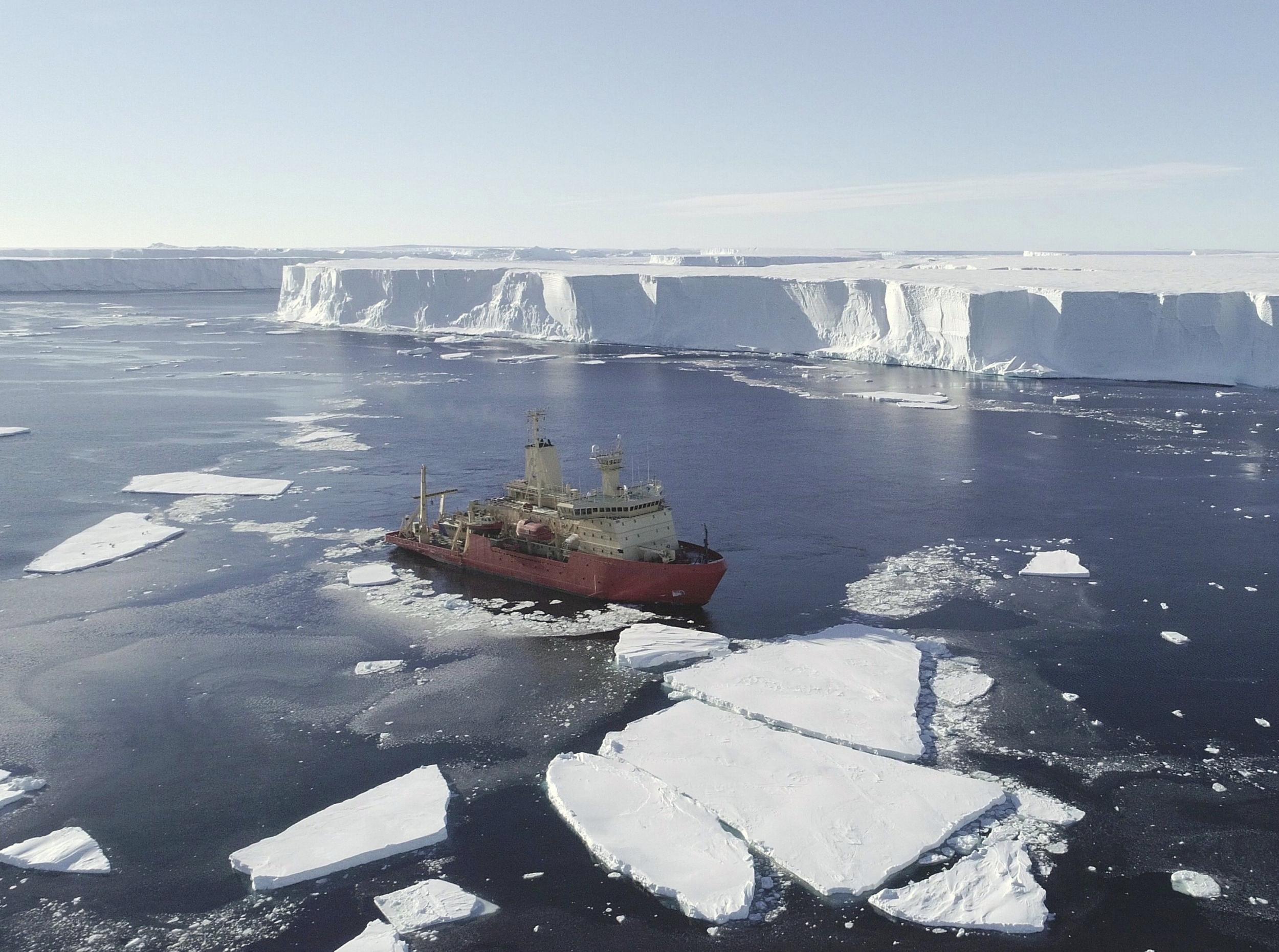Ice shelf holding back Antarctica’s ‘Doomsday glacier’, is fracturing and ‘won’t last long’, scientists warn
Collapse of enormous Thwaites Glacier, the size of Britain, would raise sea levels at least two feet

Your support helps us to tell the story
From reproductive rights to climate change to Big Tech, The Independent is on the ground when the story is developing. Whether it's investigating the financials of Elon Musk's pro-Trump PAC or producing our latest documentary, 'The A Word', which shines a light on the American women fighting for reproductive rights, we know how important it is to parse out the facts from the messaging.
At such a critical moment in US history, we need reporters on the ground. Your donation allows us to keep sending journalists to speak to both sides of the story.
The Independent is trusted by Americans across the entire political spectrum. And unlike many other quality news outlets, we choose not to lock Americans out of our reporting and analysis with paywalls. We believe quality journalism should be available to everyone, paid for by those who can afford it.
Your support makes all the difference.Antarctica’s vast Thwaites Glacier, known as the ‘Doomsday glacier’ due to the grave risk its melting poses, is fracturing and "retreating rapidly" due to the worsening climate crisis, scientists have warned.
The glacier, which flows into the Amundsen sea off western Antarctica, is around the size of Britain, or Florida, and its melting already contributes four per cent to annual global sea level rises.
Scientists have said it is now at serious risk of collapse, suggesting it could last "just a few more years" as the warming ocean waters are slowly erasing the glacier’s ice from below, leading to greater levels of fracturing and a faster flow of ice into the Southern Ocean.
At a meeting of the American Geophysical Union on Monday, the scientists suggested the glacier may only last five more years. However other scenarios suggest it could take decades or up to a century.
If the glacier was to collapse, global sea levels would rise by several feet, putting millions of people in coastal cities in the direct path of extreme flooding.
“Thwaites is the widest glacier in the world,” said Ted Scambos, a senior research scientist at the Cooperative Institute for Research in Environmental Sciences (CIRES).
“It’s doubled its outflow speed within the last 30 years, and the glacier in its entirety holds enough water to raise sea level by over two feet. And it could lead to even more sea-level rise, up to 10 feet, if it draws the surrounding glaciers with it.”
Dr Scambos is the US lead coordinator for the International Thwaites Glacier Collaboration (ITGC), a team of almost 100 scientists funded by the US National Science Foundation and UK Natural Environmental Research Council, who are working together to study the glacier.
Their work has revealed major changes in the glacier itself, as well as the surrounding water and the area where it floats off the bedrock below.
Thwaites stretches across a 120km length of frozen coastline. On its eastern side, the ice flows more slowly than the rest. This area is braced by a floating ice shelf, which thrusts out from the land mass, and remains held in place by an underwater mountain.
But the ice shelf "won’t last for long", according to Erin Petitt, an associate professor at Oregon State University.
Warmer ocean water circulating beneath the ice shelf is attacking the glacier from all angles, her team has found.
This water is melting the ice directly from beneath, and as it does so, the glacier loses its grip on the underwater mountain. Massive factures have formed and are growing as well, accelerating its demise, said Pettit. This floating extension of the Thwaites Glacier will likely survive only a few more years.
The most dramatic sign of impending failure is a set of diagonal fractures that nearly span the entire shelf, according to a report on the journal Science’s website.
Warm water is also a threat for the so-called “grounding zone,” the area where the glacier lifts off the seabed, said Peter Davis, a physical oceanographer at the British Antarctic Survey.
Dr Davis and his team have used hot water to drill access holes from the ice shelf surface to the ocean cavity hundreds of meters below. They found that the ocean waters in the grounding zone are warm by polar standards, and salty, which together generate prime conditions for melting the ice shelf from beneath.
As Thwaites retreats upstream and into the ice sheet, it may form very tall ice cliffs at the ocean front, the research team at CIRES said.
Anna Crawford, a postdoctoral researcher at the University of St Andrews, and her team use computer modelling to study ice cliff failure.
The process can take on many forms, but all of them could lead to very rapid retreat of the massive glacier, the team said.
The bedrock shape of West Antarctica makes the region vulnerable to rapid retreat via ice-cliff failure, as increasingly tall cliffs could be exposed as the ice retreats. This could lead to a chain-reaction of fracturing, resulting in collapse, said Dr Crawford.
A challenge for the team is assessing if, when, and how fast this might occur, but major ice loss is possible within several decades to a few centuries.
“If Thwaites were to collapse, it would drag most of West Antarctica’s ice with it,” said Dr Scambos.
“So it’s critical to get a clearer picture of how the glacier will behave over the next 100 years.”
Join our commenting forum
Join thought-provoking conversations, follow other Independent readers and see their replies
Comments